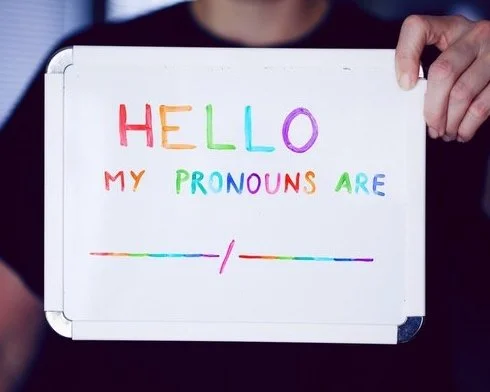You may have heard the phrase, “gender and sexuality are a spectrum, not a binary.” Kids and teens today are learning now more than ever that there are ways to identify beyond just “man” and “woman” or “boy” and “girl.” You might wonder how to tell if your child is beginning to question their gender and how to support them. As your child experiments with their gender expression and learns to exist outside the binary, giving them the space to be themselves is important for them to grow.
What does it mean to question gender?
Studies show children as young as 18 months can recognize gender groups. As they age, they may experiment with taking on other roles or styles typically assigned to the opposite gender. This is normal behavior and may signal that your child is trans, nonbinary, gender nonconforming, or just exploring their creativity. It’s important to treat this as not “just a phase” but as valid experimentation. Questioning gender doesn’t necessarily mean questioning sexuality, so if your child explores their gender expression, they may not be homosexual or bisexual. Experimenting with gender expression should be treated differently than a child coming out as gay, lesbian, or bisexual.
Signs your child might be questioning
It’s possible your kid isn’t going to come right out and say, “I’m questioning my gender.” Watch for different behaviors that indicate they’re pushing against the gender binary. If your child is questioning their gender, they may be:
Changing their personal style to fit in with androgynous or opposite-sex trends.
Refusing to wear clothes that are expected of their assigned gender.
Going by a different name than they were given.
Identifying with different pronouns than those they were assigned from birth.
Changing their bathroom behavior, such as girls standing to urinate.
Playing with toys traditionally assigned to children of a different gender.
Struggling in school or isolating themselves if they don’t live in a supportive environment.
Consuming media that focuses on LGBTQ+ people and culture.
Playacting in roles that are typically outside their assigned gender.
How you can support them
The most important step you can take if your child is exploring their gender is giving them support in every area of their lives. This can mean:
Referring to them by their preferred pronouns and name.
Encouraging them to experiment with their style of dress.
Listening to and accepting them when they have conflicting feelings.
Asking open-ended questions to check in with conversations, such as “I noticed you’ve been wearing a new style. How do you like it?”
Giving them the space to be themselves but letting them know they can come to you when they need to.
Allowing them to express their gender in public, even if it makes you or others uncomfortable.
There are plenty of organizations and resources online, such as PFLAG, that aim to support parents of LGTBQ+ children and teens. Familiarizing yourself with what’s out there will give you the language to start conversations with and be there for your child as they get to know themselves.
If you suspect your child is exploring their gender, get them to a gender-affirming mental health professional if you can. A therapist will guide them through safe avenues of questioning themselves and help them with the coming-out process if they decide to do that. Family therapy is another great step you can take to address your changing family dynamic as your child grows and discovers themselves.
To find out more about how therapy can help your child as they question their gender, please reach out to us for a free consultation.
Learn more about LGBTQIA therapy.


